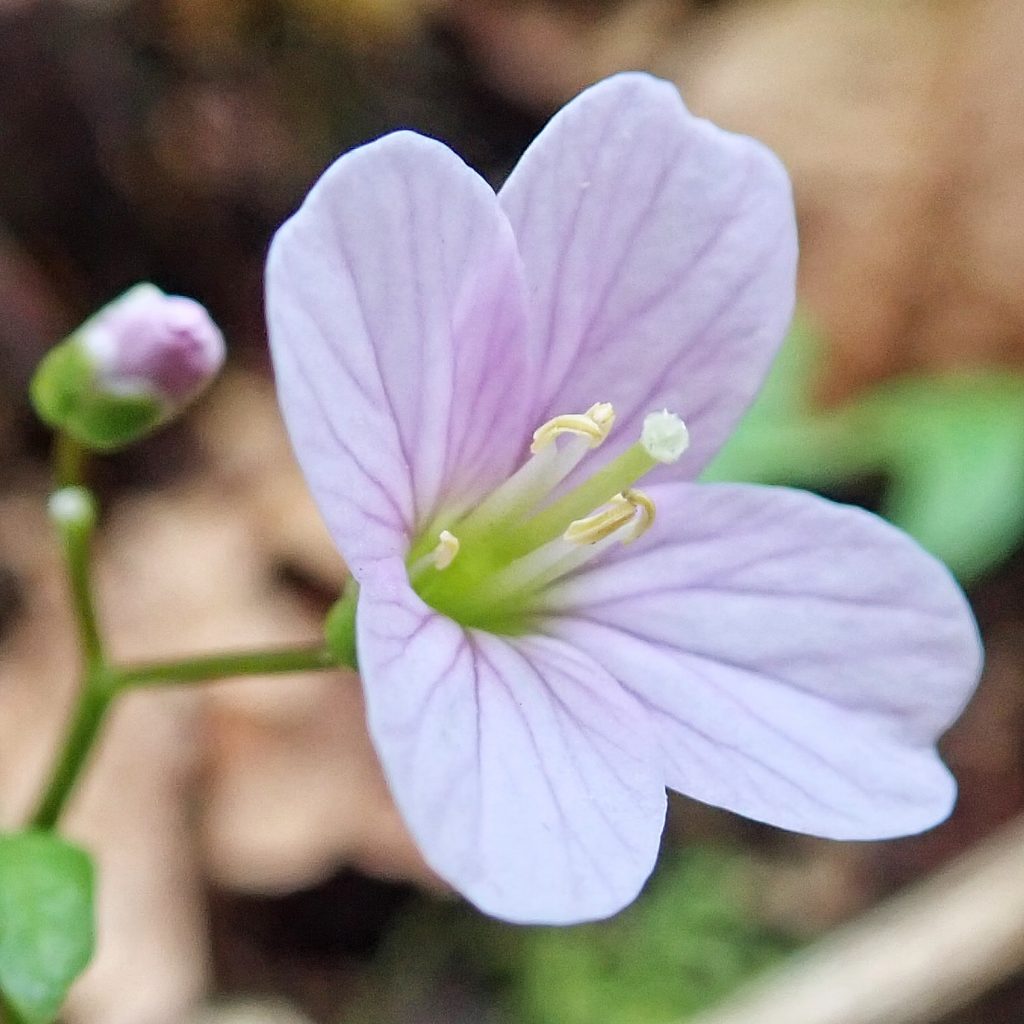
A pretty little member of the mustard family (Brassicaceae), Cardamine nuttallii goes by many common names, among which are Nuttall’s toothwort, oaks toothwort, slender toothwort, beautiful bittercress, and, like so many early bloomers, spring beauty. Because of its variability it has caused some taxonomic confusion, and has had several scientific names, including Cardamine pulcherrima, Cardamine quercetorum, Cardamine gemmatus, Dentaria gemmata, Dentaria tenella…
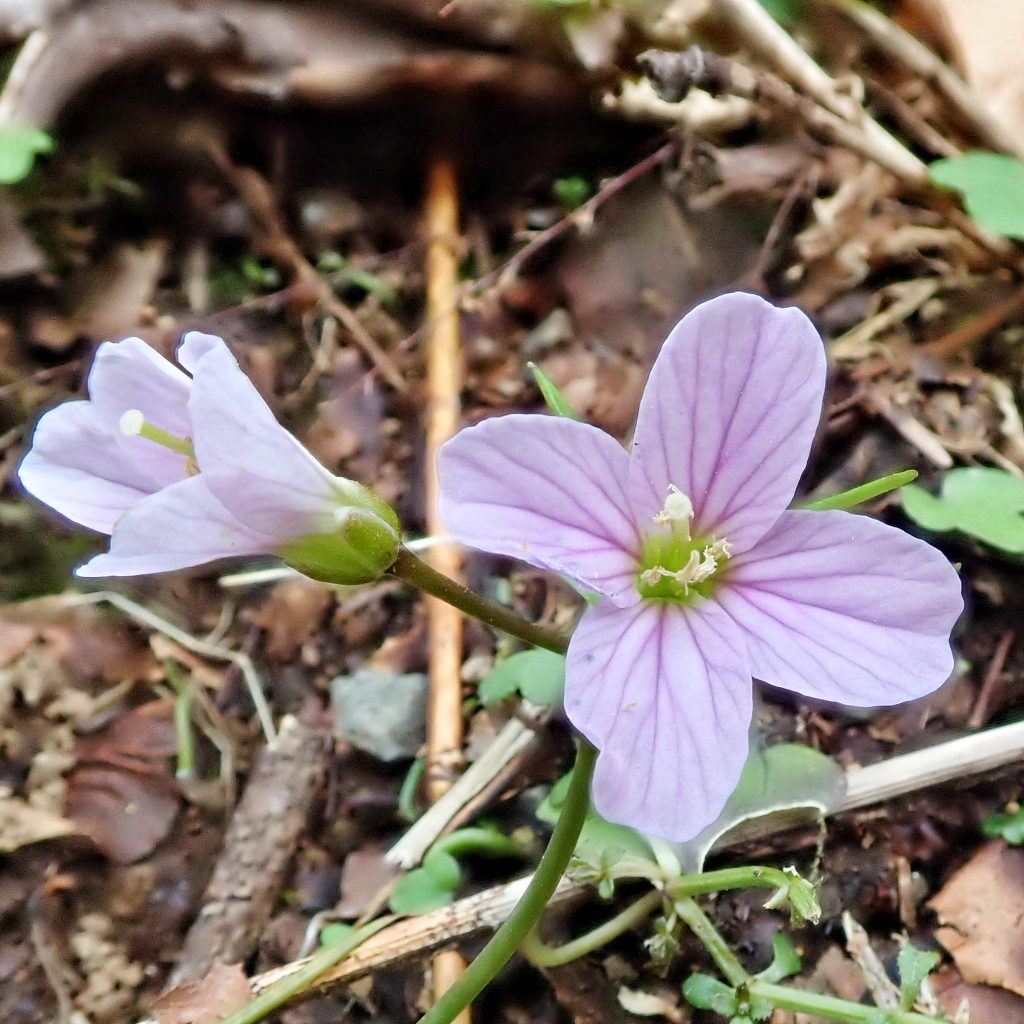
Sometimes I still forget that my picture identifications, especially with a wildly variable and extensive genus like Cardamine, are not reliable. So that once again I had to make a 2nd trip so as to positively identify a plant, even though ultimately I was correct that it was Cardamine nuttallii. I thought I had gotten lucky by having a photograph of an Enchoria lacteata moth nectaring at the flower, because it’s forewing length is about 11mm, which would make the petal about 8mm, and the style about 5mm. But the leaflets were a little off in a few cases, and I had failed to determine that it was perennial, rhizomatous, and that the stem narrowed significantly below ground.
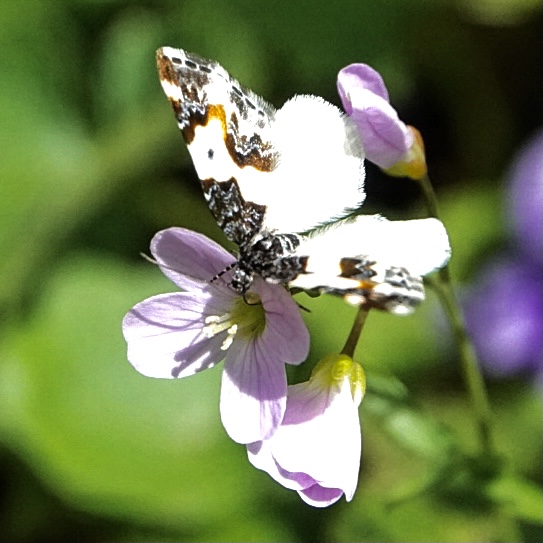
It was, as usual, a wonderful trip to The Cliff, where we found a few more species of plants in bloom, as well as the emergence of Mesoleuca gratulata, several of which moths were nectaring on the Cardamine, providing some nice photo ops. And I was able to confirm all of the variables which added up to a positive identification of this plant as Cardamine nuttallii.
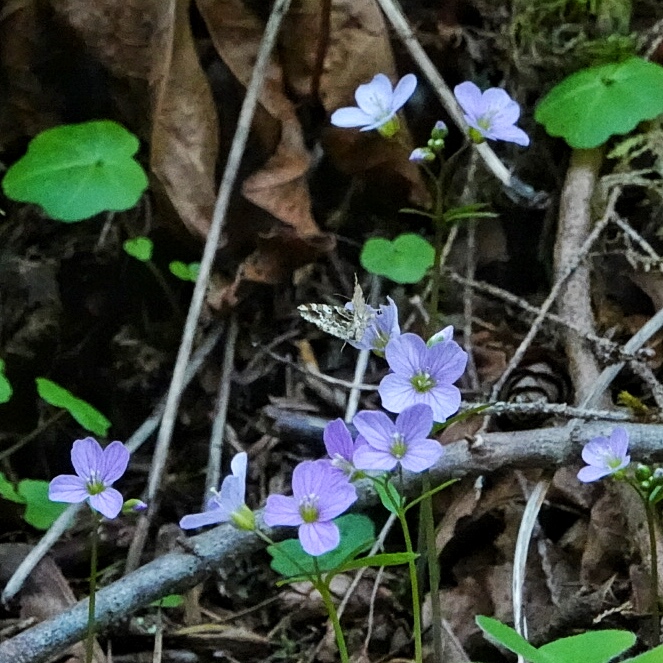
These early emergers are vitally important to many early flying insects. While we were there we saw, in addition to the 2 moths previously mentioned, several bumblebees (possibly Bombus vosnesenskii due to the early flight season), a few bee flies (probably Bombylius major based on the wing pattern), and a number of Syrphid flies (that I can’t even hazard a guess about without a much better look), in addition to many other small, flying insects, all of which were partaking of the bounty of nectar and pollen these flowers provide. And it is a bounty! My conservative estimate would put the number of Cardamine nuttallii flowers along that 200 yard stretch of road at about 500.
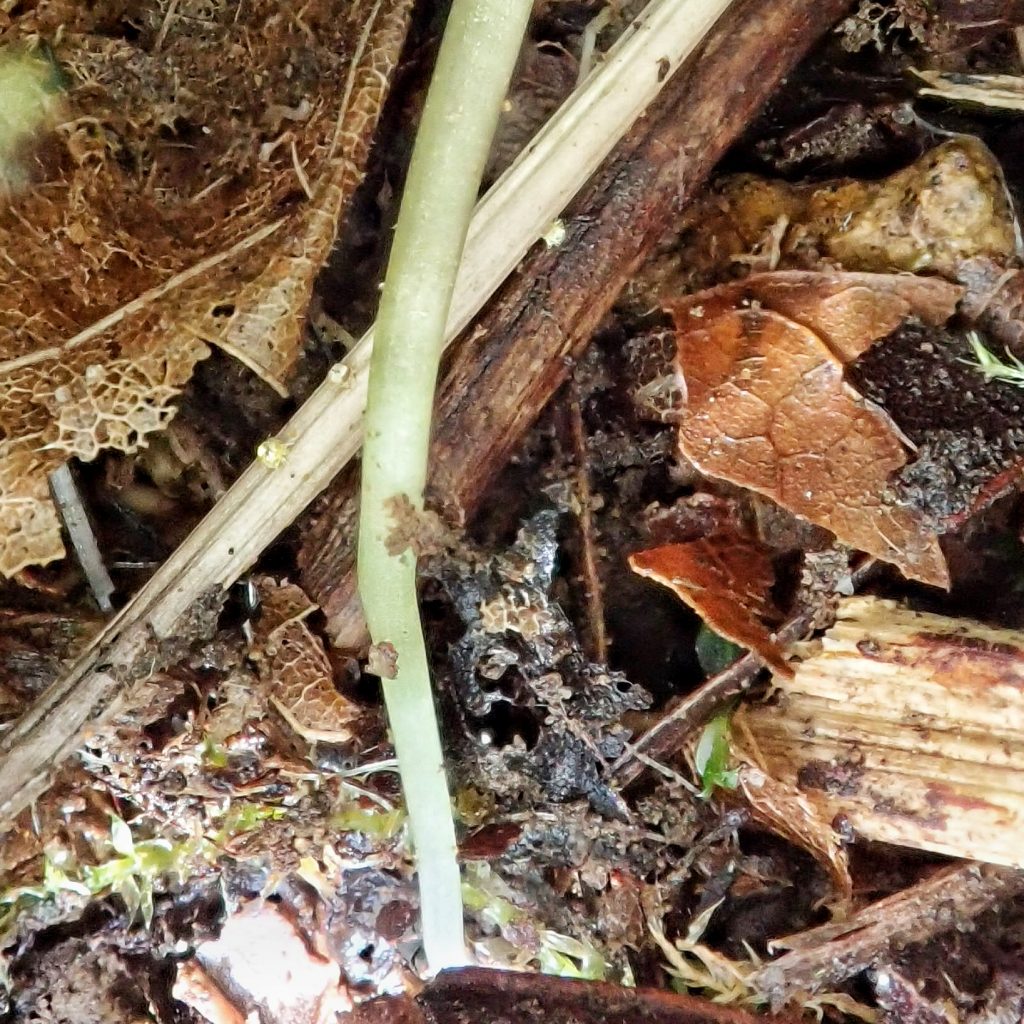
Description-Low growing perennial plant, rarely more than 8” tall, hairless, with unbranched stems; stem wider above ground than at rhizome; basal leaves round to heart shaped, sometimes lobed; 1-3 stem leaves with 3-5 leaflets, usually lanceolate, sometimes with small angular lobes, end leaflet 1-3cm long; flowers usually 1 (-3) at stem tip, pink to lavender (occasionally almost white), 3.5-5.5mm sepals, 8-15mm petals, 2-8mm style.
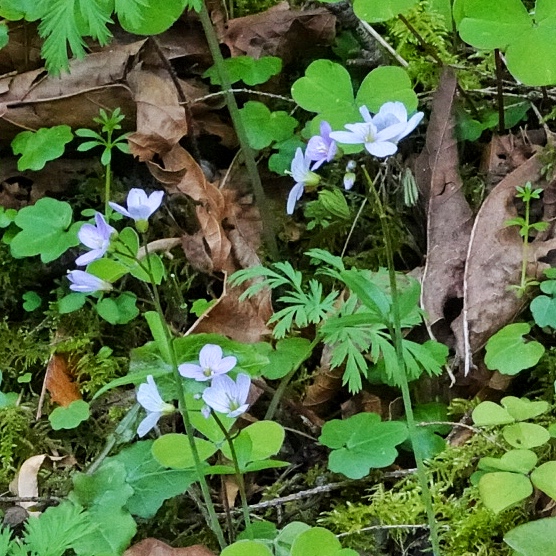
Similar species-Because almost all of the Cardamines occasionally have pink flowers, and C. nuttallii sometimes has whitish flowers, I’m going to list key points for most of the Cardamine sp. one might find; C. hirsuta, C. oligosperma, C. parviflora, C. pensylvanica are all annuals and lack rhizomes; C. californica, C. bellidifolia, C. cordifolia all have simple stem leaves, rather than leaflets; C. holmgrenii, C. breweri, C. angulata all have stems as wide above ground as at the rhizome; C. penduliflora has 5-12 leaflets per petiole; C. occidentalis has smaller flowers, with 2mm sepals, 4-6mm petals, and .5-1.5mm style.
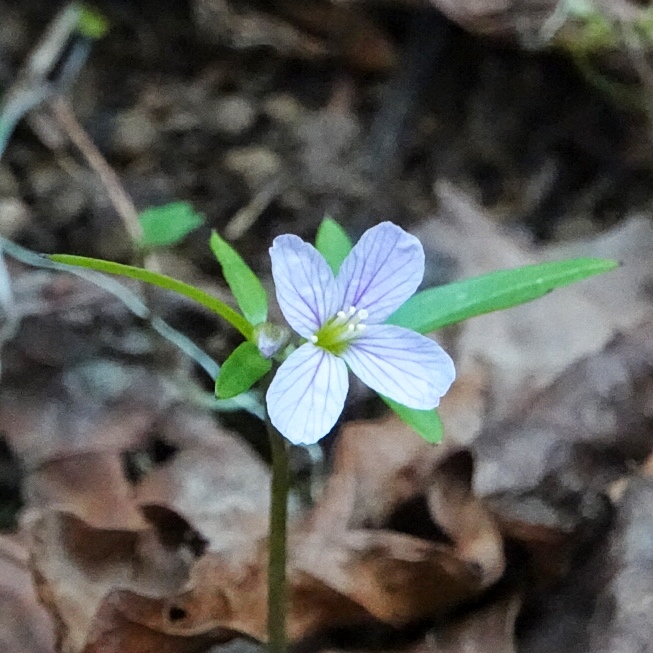
Habitat-Moist to mesic mixed woodlands up to mid elevations.
Range– West Coast native; in our region it is found from the eastern slope of the Cascades to the Pacific Ocean, and in nw California.
Reproductive timing-Blooms March to May
Eaten by– The butterflies Anthocharis julia and A. sara, and Pieris marginalis, utilize it as a larval host, and it fills in for many other Lepidoptera who use mustards in general. As shown in the photos above the day flying (diurnal) moths Enchoria lacteata and Mesoleuca gratulata use it as a nectar source.
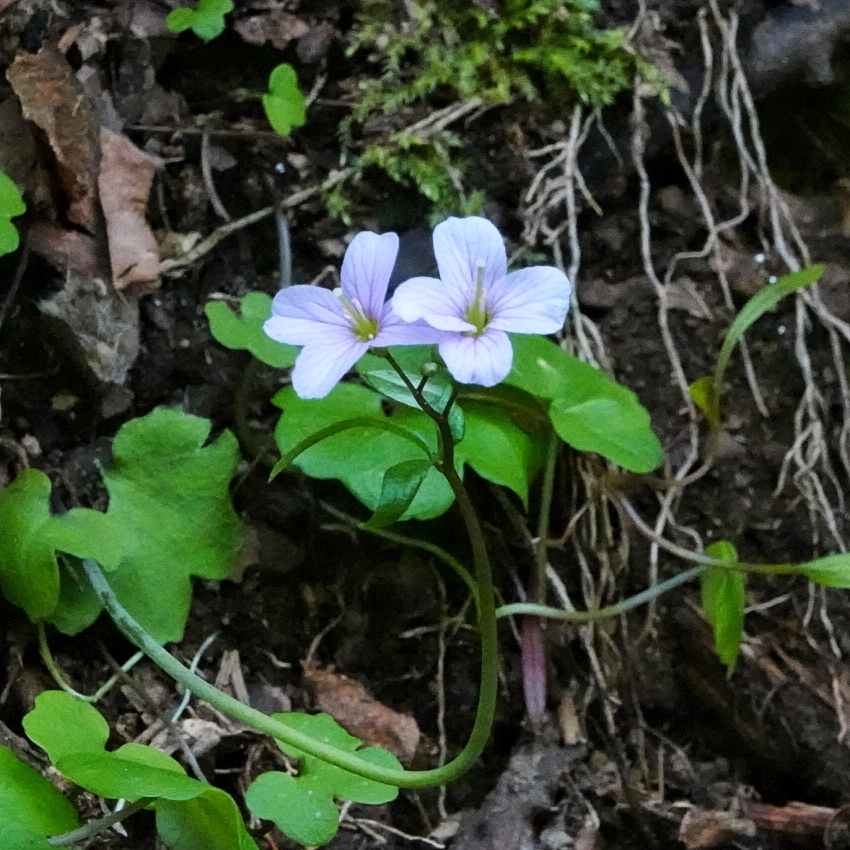
Etymology of names–Cardamine is from a Greek word for cress. The specific epithet nuttallii honors Thomas Nuttall (1786-1859), a botanist and general naturalist who explored and collected widely in America, and spent over a year in the PNW.
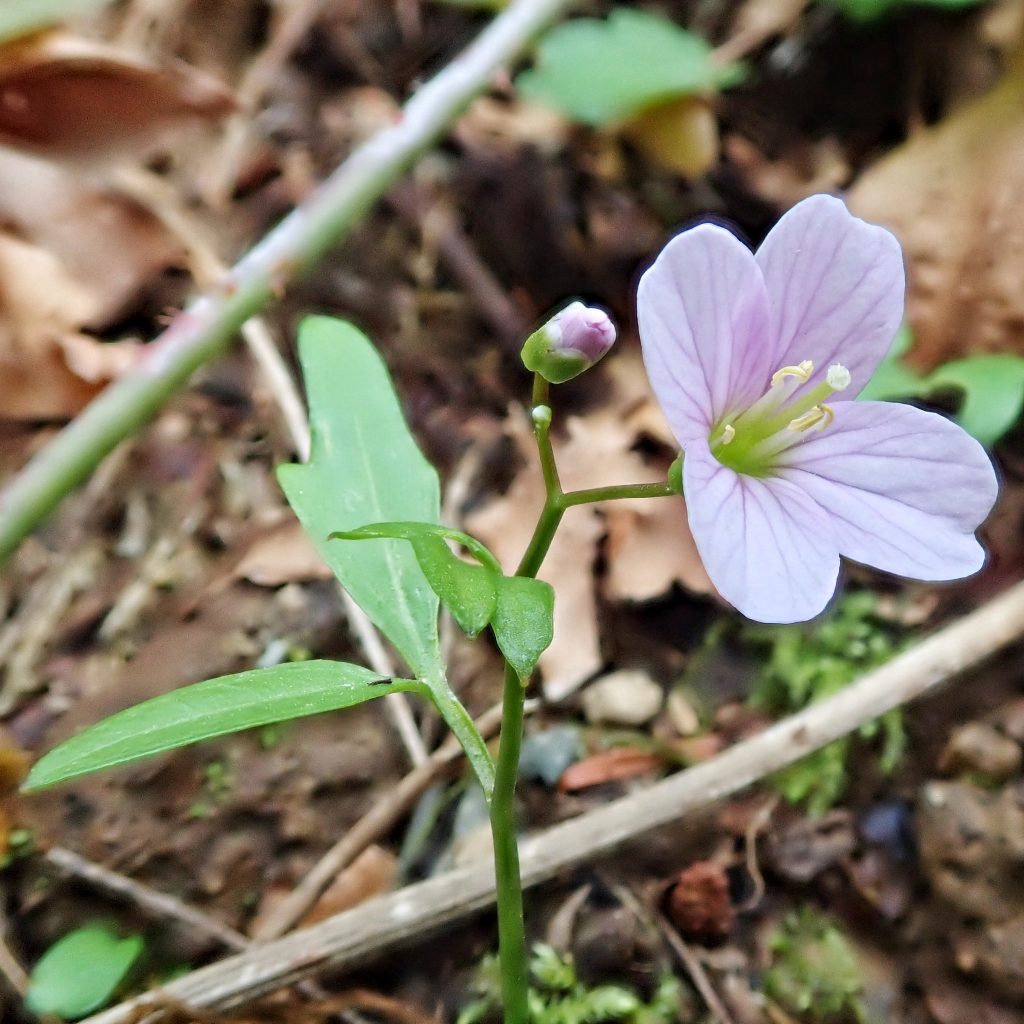
https://ucjeps.berkeley.edu/eflora/eflora_display.php?tid=17168
https://www.pnwflowers.com/flower/cardamine-nuttallii-var-nuttallii
https://wikis.evergreen.edu/pugetprairieplants/index.php/Cardamine_nuttallii
http://biology.burke.washington.edu/herbarium/imagecollection/taxon.php?Taxon=Cardamine%20nuttallii
https://en.m.wikipedia.org/wiki/Thomas_Nuttall
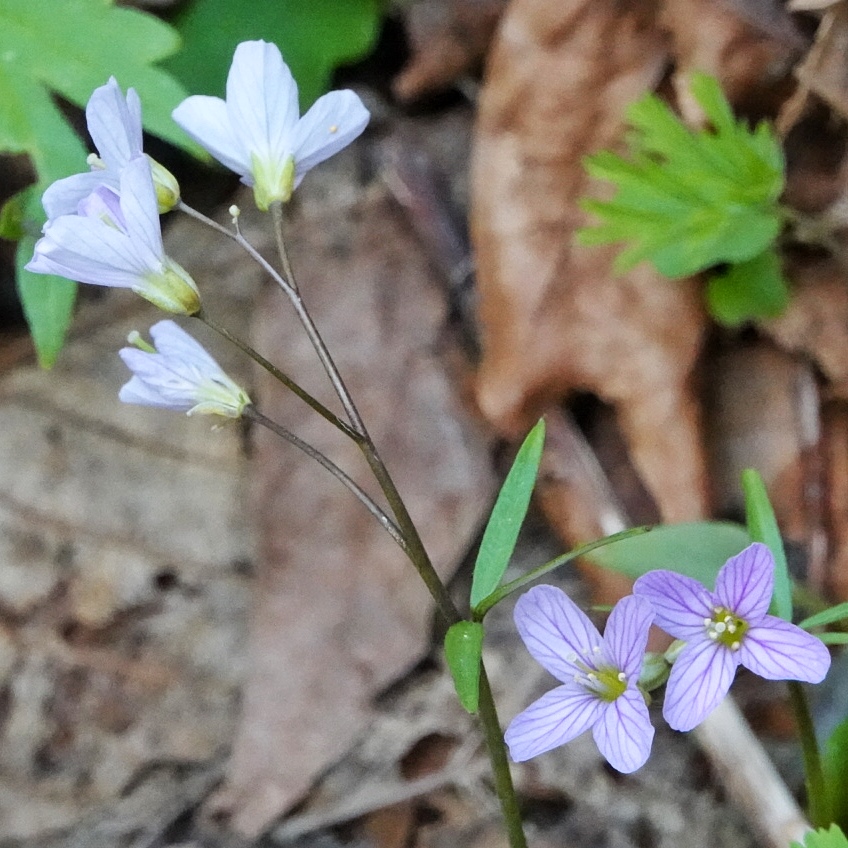
Never would have guessed this is a member of the mustard/cabbage family! Although on googling, I see there are over 4,000 species, which take very different forms.
4 petaled flowers doesn’t guarantee it’s a mustard, but Brassicaceae is usually a good place to start looking. And you’re right-amazingly diverse family!
I wish I had some of this growing in my wet Seattle yard which has only way too many of some other cardamines…. Just a note to thank and wish you a happy spring, 2024, Dan.
Thank you, Brooke!
My observant partner noticed this in the grass beside the trail Whidbey Island at Hoypus Point, Deceptoon Pass